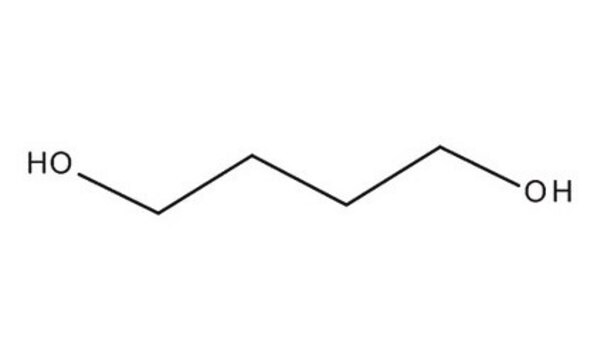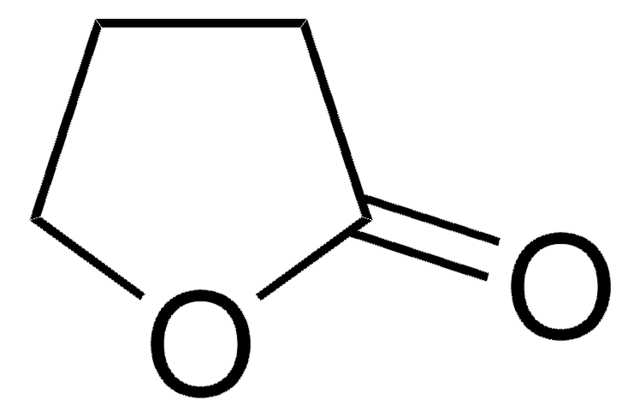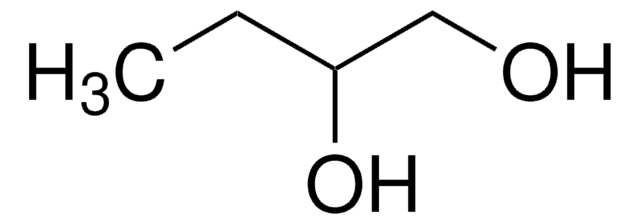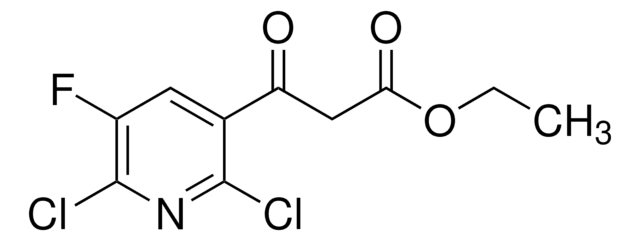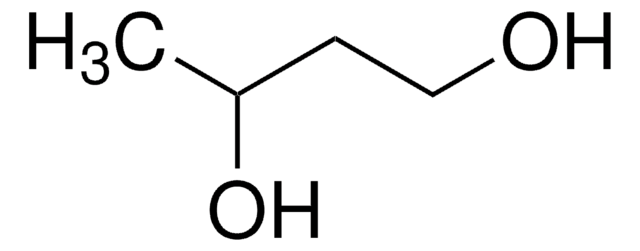Wichtige Dokumente
493732
1,4-Butandiol
ReagentPlus®, 99%
Synonym(e):
Tetramethylenglykol, ‘1,4-Butylenglykol’
About This Item
Empfohlene Produkte
Dampfdichte
3.1 (vs air)
Qualitätsniveau
Produktlinie
ReagentPlus®
Assay
99%
Form
solid or viscous liquid
Selbstzündungstemp.
698 °F
Brechungsindex
n20/D 1.445 (lit.)
bp
230 °C (lit.)
mp (Schmelzpunkt)
16 °C (lit.)
Dichte
1.017 g/mL at 25 °C (lit.)
Funktionelle Gruppe
hydroxyl
SMILES String
OCCCCO
InChI
1S/C4H10O2/c5-3-1-2-4-6/h5-6H,1-4H2
InChIKey
WERYXYBDKMZEQL-UHFFFAOYSA-N
Suchen Sie nach ähnlichen Produkten? Aufrufen Leitfaden zum Produktvergleich
Verwandte Kategorien
Anwendung
- Homoallyl alcohol (3-buten-1-ol) and tetrahydrofuran via vapor-phase dehydration using ZrO2 as a catalyst.
- Poly(1,4-butanediol succinate) polymer by reacting with succinic anhydride.
- Biodegradable homopolyesters [poly(butylene succinate) and poly(butylene adipate)] and copolyesters [poly(butylene succinate-co-butylene adipate)] by treating with succinic acid and adipic acid via esterification and deglycolization reaction.
- Poly(1,4-butyl sebacate) by polyesterification reaction with sebacic acid or its derivatives.
Rechtliche Hinweise
Signalwort
Warning
H-Sätze
Gefahreneinstufungen
Acute Tox. 4 Oral - STOT SE 3
Zielorgane
Central nervous system
Lagerklassenschlüssel
10 - Combustible liquids
WGK
WGK 1
Flammpunkt (°F)
273.2 °F - closed cup
Flammpunkt (°C)
134 °C - closed cup
Persönliche Schutzausrüstung
Eyeshields, Faceshields, Gloves, type ABEK (EN14387) respirator filter
Hier finden Sie alle aktuellen Versionen:
Besitzen Sie dieses Produkt bereits?
In der Dokumentenbibliothek finden Sie die Dokumentation zu den Produkten, die Sie kürzlich erworben haben.
Kunden haben sich ebenfalls angesehen
Protokolle
99%; Glycerol, ≥99.5%; Tetraethylene glycol, 99%
Unser Team von Wissenschaftlern verfügt über Erfahrung in allen Forschungsbereichen einschließlich Life Science, Materialwissenschaften, chemischer Synthese, Chromatographie, Analytik und vielen mehr..
Setzen Sie sich mit dem technischen Dienst in Verbindung.
